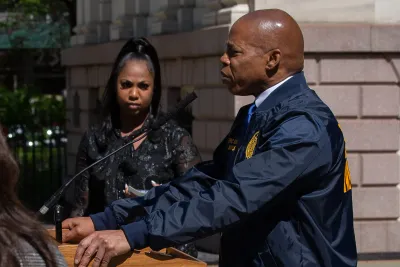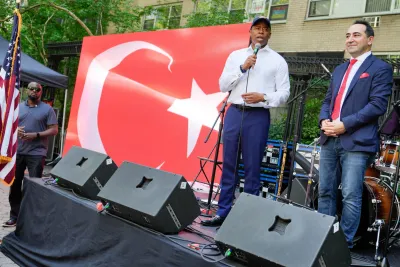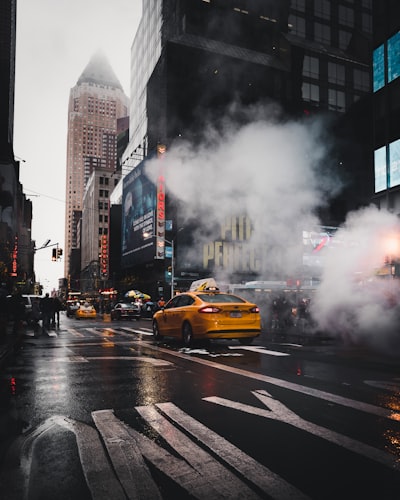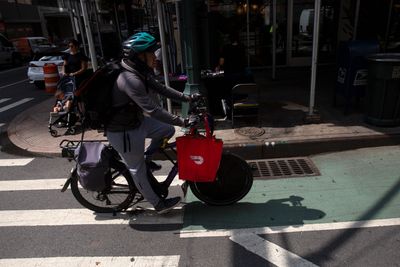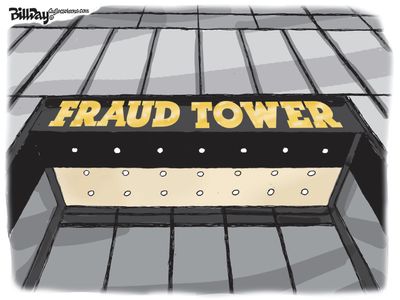Stephon Johnson, Harry Siegel, and George Joseph, The City

This article was originally published on Jul 14 8:04pm EDT by THE CITY
“Simply put, the rents are too damn high,” said Jason Hairston, explaining on Thursday why he’d closed his popular 14th St. eatery, The Nugget Spot, in September of 2020.
“I was on the way,” Hairston recalled. “I had spent money on a logo and redesigning my store. I was getting ready to open another location in Columbus Circle [in the new Turnstyle Underground Market] and to be in Citifield for the 2020 season. I’d been open for seven years and I was getting ready, getting my sauce made, my flour made — things were lining up and falling into place and then we had to shut our doors.”
In a business with thin margins to begin with — and uncertainty about how long the pandemic, and the city’s shutdown, would last — “there was no way I was going to make money,” said Hairston, a lifelong New Yorker who’s now living in New Jersey while consulting for a Korean hot dog franchise.
“The only reason I would be there would be to support my landlord,” he added.
The Nugget Spot was one of the 4,040 private establishments the city lost between the fourth quarter of 2019 and the fourth quarter of 2021, according to a new report from New York City Comptroller Brad Lander, as huge losses in Manhattan wiped out gains in Brooklyn. Over the same two-year pandemic stretch, “jobs in New York City fell by approximately 295,000, or 7 percent,” as THE CITY previously reported.
The rare citywide drop in the number of private establishments since 2019 — including a loss of 2,023 retail locations along with 2,482 private household employers, as families let go of on-the-books nannies and maids during the pandemic — was easily the biggest recorded at least since the feds implemented their current counting system in 1990.
Since then, the number had steadily gone up except during the recession in the early 1990s and the years just after the 9/11 attacks.
Manhattan’s share of the city’s private establishments dropped below 50% for the first time, according to Lander’s report, as Brooklyn gained 1,267 over the same period — continuing a 30-year growth trend in which the borough has surged from 17.8% of the city’s total in 1990 to 24.4% in 2021. (The Bronx gained 109 private establishments and Staten Island eight between 2019 and 2021, while Queens lost 158.)
Using Google mobility data, the report also found that New Yorkers in every borough spent less time in “retail and recreation,” “grocery and pharmacy” businesses, “transit stations” and at “the workplace.”
Meanwhile, time spent in parks was up sharply, ranging from a 19% increase in Manhattan to a 148% increase in Queens.
That helps explain why Walgreens sublet 16 of its former Manhattan locations in 2020, a move that Fraser Engerman, a spokesperson at the retail and pharmacy giant, suggested was in the interests of “the communities we serve.”
“As we move forward on our strategy to expand Walgreens role as a leader in the delivery of healthcare, we are focused on creating the right network of stores in the right locations to best meet the needs of the communities we serve,” Engerman told THE CITY. “There are a number of factors that we take into consideration including dynamics of the local market and changing buying habits of our customers.”
For Brandon Jenkins and Sebastian Stant, two young entrepreneurs who opened their first brick-and-mortar site for their emerging clothing brand in May, Manhattan’s luxury fashion corridors just weren’t an option.
Their company, Sadderday, strives to sell affordable street wear, and the expensive, long-term lease the pair would have had to agree to in SoHo would have forced them to abandon a core part of their customer base, which they had built up online in the decade prior.
“We didn’t really want to have to raise our prices in order to meet SoHo rent, or stick out like a complete sore thumb around everything else there,” said Stant, adding that Brooklyn “was a no-brainer for us.”
Instead, they opted for a location in Williamsburg, which has outdoor space where customers can work or hang out in — something they could have never found in the city.
“We’re like a friendly brand, people can sit in the store with us,” said Jenkins, a Bed-Stuy native. “We offer drinks, music. We’ve got like a little backyard that people come in.”
City Councilmember Lincoln Restler, whose district includes thriving downtown Brooklyn along with Greenpoint, Brooklyn Heights, Boerum Hill and Williamsburg, saw the comptroller’s report as a sign of the borough’s new centrality.
“Businesses want to be located in the most dynamic neighborhoods in New York City and Brooklyn is the place to be,” Restler told THE CITY. “Increasingly, the private sector understands that to attract the best talent, it helps to be based in neighborhoods where their workers live. New York City is becoming a true five-borough economy with Brooklyn leading the way.”
THE CITY is an independent, nonprofit news outlet dedicated to hard-hitting reporting that serves the people of New York.
